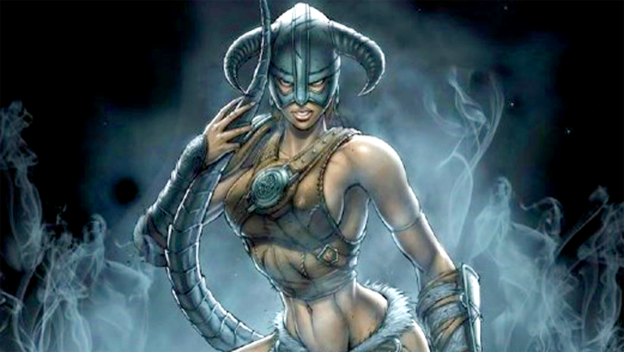We are in an age of gaming when remasters of classic titles are released as a matter of course. This mostly has to do with improvements in display technology and graphical processing power. It’s the reason why even if you find an adapter that will let you hook, say, a Nintendo 64 up to an HDTV, the image it puts out is still subject to degradation because the system outputs video at a much lower resolution. This is compounded by the blurry, low-fidelity textures that permeate games from a few generations ago. Herein lies the reason why developers “remaster” their games: assets actually have to be recreated at a higher native resolution in order for them to look as good as (or better than) your brain remembers them. Enter The Elder Scrolls V: Skyrim Special Edition , Bethesda’s attempt to bring their critically-acclaimed RPG forward five years into our 4K future. Is it successful? Absolutely. At being a scam, that is.
Skyrim released in 2011 to widespread praise, earning a bevy of awards and accolades. Like many Bethesda titles, however, it contained a not-insignificant number of bugs. From NPCs glitching through objects and talking over each other to incorrectly rendered objects, crashes, and other bugs, Skyrim was far from what I’d call a polished experience. And yet fans and critics alike were willing to look past these blemishes in light of the game’s immersive world and plethora of content. I disagreed with that leniency then, and I feel even more irate now that the free pass Skyrim seemed to have with regard to criticism has resulted in a $60 re-release that fixes virtually none of the game’s problems.
So what exactly is new in Skyrim: Special Edition ? Not all that much, as it turns out. It includes all previously-released DLC, which is nice, and mod support for consoles, which is less of a game-changer than you might think due to the highly-curated nature of the mod store. The real draw, and what Bethesda’s hoping will draw buyers to this new version, is a bevy of graphical alterations. These include dynamic depth of field, new snow and water shaders, screen-space reflections, and “volumetric god rays,” which is just an outrageously pretentious way of saying “better lighting effects.” These improvements are noticeable, particularly when compared side-by-side with the original version. But Skyrim ‘s environments were never ugly, unlike its character models and their janky animations, neither of which have been overhauled.
Worse still is the fact that the developers prioritized these weak visual upgrades over a stable framerate, which can’t even hold steady at 30FPS. Am I supposed to believe that over the course of five years, Bethesda didn’t pick up any programming or design know-how that they could have implemented in this unnecessary remaster to make it less of a mess? The PC mod community has done far more to breathe new life into Skyrim than any of the meager improvements featured in Special Edition.

It’s insulting, frankly, to be charged $60 for a lightly beautified version of I game I could have bought a few weeks ago for $5 on PC. Bethesda’s backwards review policy doesn’t help, either. I would never advocate that critics “know better” than players, because we’re players too, but I find reviews to be a useful tool for gauging the overall quality of games I’m less likely to buy outright. Bethesda says they want everyone to play their games at the same time, but their actions – giving YouTubers early copies of the game and leaving the press blind – seem to indicate otherwise.
Between the meager additions to Skyrim Special Edition and its developer’s apparent aversion to well-intended criticism, this is one imbroglio I’m happy to leave in the dust. I won’t be buying Special Edition, and you shouldn’t either, lest your wallet send the message that you’re okay with buying a broken product.
